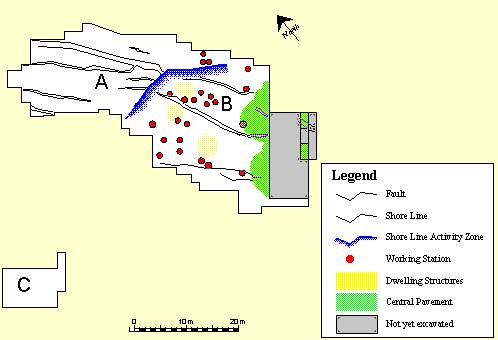
Fig 1: Find horizon facies A-C, and the archaeological division of the site into zones of activity as suggested by D. Mania (after Mania 1993a).
Since this is not the place to give a complete account of all stratigraphic and palaeogeographic observations, the reader is referred to the aforementioned literature. In general, the find horizon lay in two main areas or 'facies' (A and B in Fig. 1).

Fig 1: Find horizon facies A-C, and the archaeological division of the site into zones of activity as suggested by D.
Mania (after Mania 1993a).
In the north-west and east, the finds were encountered in 0.1-1.0 m of travertine sands deposited by a small stream flowing into a lake and forming a flood plain or 'diluvial fan' (A in Fig. 1). Within the travertine sands of the diluvial fan, mollusc assemblages of particularly those species found near springs and in standing water are indicative of a fluvial environment (Mania (1983b, 143).
To the south-west, finds lay on a loess-like deposit, with clay gathered towards the top (B in Fig. 1; the shore facies). A shore line (up to 0.4m high) separated the south-western shore facies from the diluvial fan facies. In a trench to the west (C in Fig. 1), finds had predominantly accumulated in quartz as well as in the overlying travertine sands.
All facies of the archaeological finds horizon were covered by up to 0.6m of Chara limestone, a sediment probably originating from repeated flooding of the neighbouring lake, and contained minor amounts of probably reworked material from the main find horizon. The mollusc assemblages (Mania 1983b) are dominated by autochthonous species indicating swamp and water habitats. Remains of Characeae are abundant. The preservation of female fructification organs is especially remarkable: These are preserved as 'empty chalk mantles' (Nötzold 1983, 43), indicating their autochthonous nature and the absence of pressure or other mechanical destruction. Up to 6m of dense interglacial travertine had formed on top of these sediments. The situation in the finds area is also complicated by numerous tectonic faults (Mania 1983a).
The distribution patterns of the find material has led Mania to suggest a division of the archaeological find horizon into different zones of activities (1986a; 1991a; 1993a). Proposed structural features, work areas, a paved space, as well as a dumping area, point to early hominid dwellings.
© Internet Archaeology
URL: http://intarch.ac.uk/journal/issue8/vollbrecht/en/3.html
Last updated: Thu Aug 10 2000